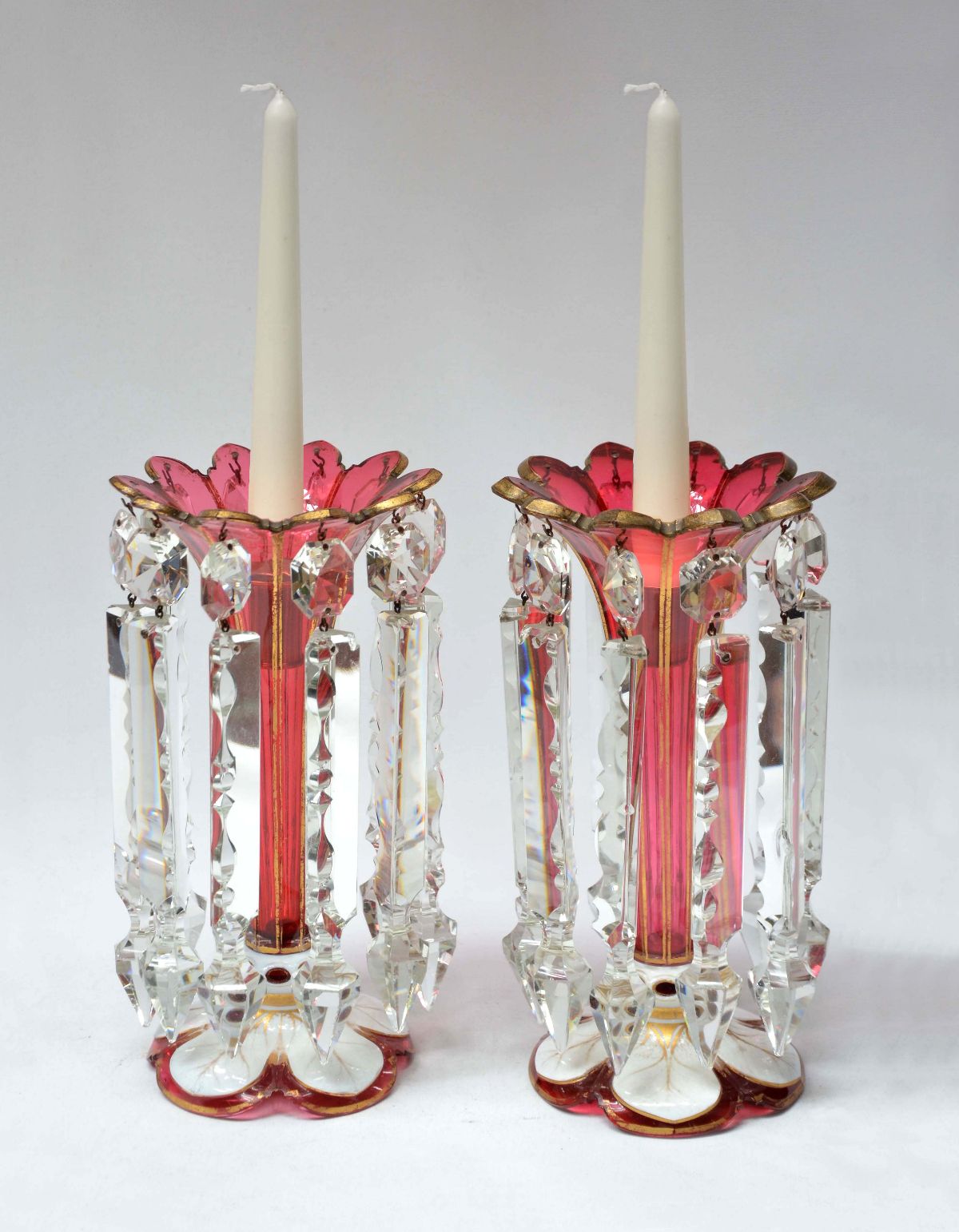Pair of ruby overlay Bohemian Lustre Candlesticks
test
Pair of ruby overlay Bohemian Lustre Candlesticks
2876
Pair of ruby overlay Bohemian Lustre Candlesticks:
of vase form with white petal feet; the petals veined with hand-painted
gilding; dressed with set of cut-glass Victorian prisms and cut Albert
pendants, so named after the Prince Consort.
Mid 19th century, probably by Richardson of Stourbridge.
| Height: | 10" | - | 25.5cm |
| Width: | 5" | - | 12.7cm |
Glossary Words
'Albert' pendant
A long cut-glass pendant particularly popular in the Victorian period, hence the homage to Prince Albert. These can be straight or tapered and cut with various designs.
lustre
The literal meaning in French is 'chandelier', or 'shine'; in English, 'radiance' or 'reflected light'. This word is also used for a cut-glass candlestick, usually with a fringe of cut glass prisms.
Richardson of Stourbridge
English company founded c.1830 by Thomas Webb, and the Richardson brothers, renowned in the late 19th century, until about 1906, for its high quality coloured 'cameo' or 'cased' glass, and clear glass etched with naturalistic designs. They made chandelier prisms like Ford later made motor cars. Their prisms were used by many other makers.
Bohemian glass
From the Kingdom of Bohemia, a state located in Central Europe whose capital was Prague. After WW1 the Kingdom was dissolved and became part of the newly formed Czech Republic. During the Renaissance, Bohemia became famous for colourful glass decorated with fine cutting and engraving. Clear glass was also produced in Bohemia. Bohemian glass-workers discovered potash combined with chalk created a clear colourless glass that was more stable than glass from Italy and that could be cut with a wheel. Loetz and Moser are key Bohemian glass workers. The height of popularity for Bohemian art glass was during the Art Nouveau period.




